Here in Southern Oregon, we are officially in that time of spring when everything is bursting. If one stood still long enough, one could see the grass grow and the leaves unfurl. The last few days, I have noticed the difference in leaf size on the maple outside my window from morning to afternoon. The grass is, I think, growing even faster. But of course, how can I sit and watch the plants grow when my own energy is vibrating with the same intensity?
This is normal for me. I have traveled enough cycles of the seasons to know that the enthusiasm I feel now is bigger than myself. I am tapping into the pulse of the earth awakening. And so I am also bursting with ideas. I have to keep from allowing them all to germinate because I know that I can’t cultivate them all. This is especially true for the vegetable garden and other small patches that I tend. Once I am dragging hoses endlessly through the hot, dry, prickly days of summer, I curse my spring self. I hate her for thinking any of it was a good idea.
Does that stop me? Have I learned moderation? Absolutely not. Just yesterday, I ordered entirely too many native plants for my native flower garden, which needs replanting due to flooding. These will need babied all summer… And yet, I am giddy with excitement as I imagine the bare bank in mid-summer bedecked in the yellow blossoms of Oregon Sunshine, rudbeckias, and three kinds of native buckwheat—butterfly candy.
This past week, I also worked on a few different posts for this space. Last week I interviewed my friends Cody and Tina of Cerberus Coffee about co-fermented coffee. That piece is almost ready. Its wonderful what I learned and can’t wait to share. I am also working on a piece about laphet, fermented tea leaves, but still have a bit more research to do. In the meantime, I want to share mostly photos of the wildflowers in the forested areas of the Siskiyou Mountains.
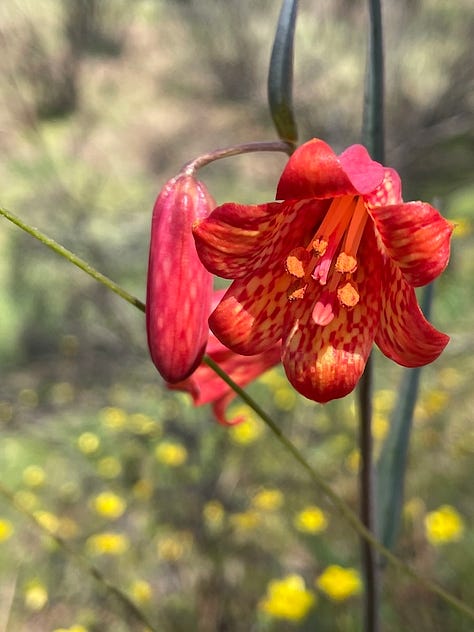
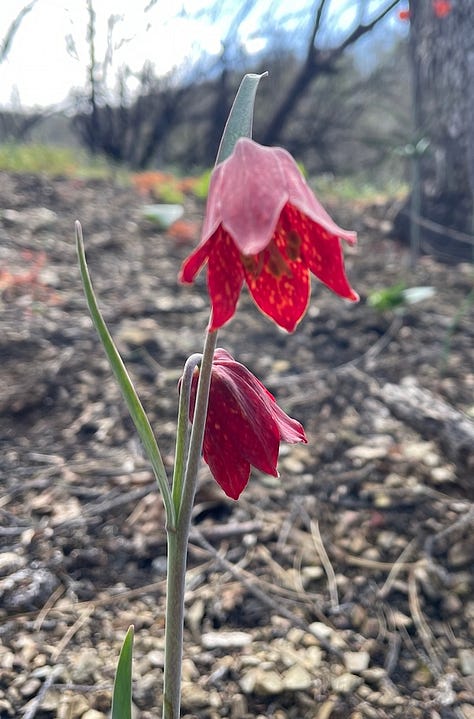
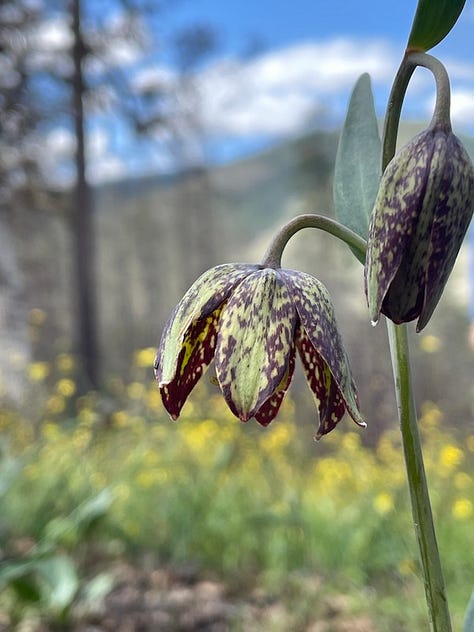
Last June, multiple fires started in our area by mowing (which we do to prevent fires). Most were put out before reaching an acre in size, but one took off up a drying grass hillside.
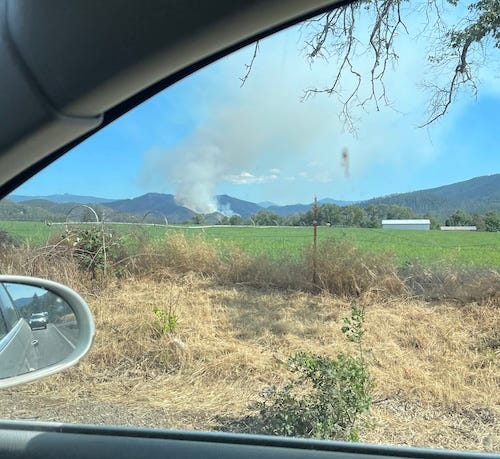

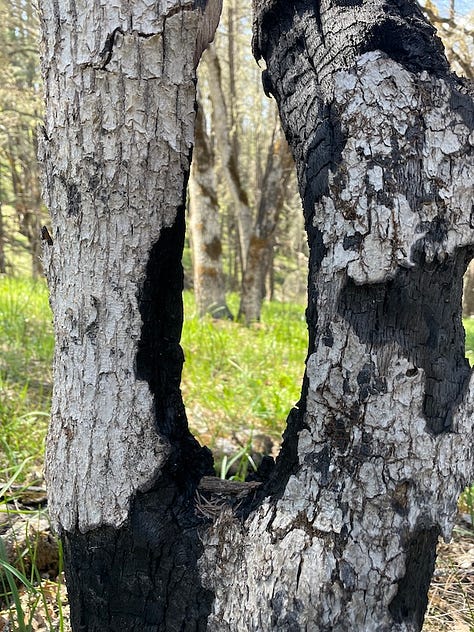
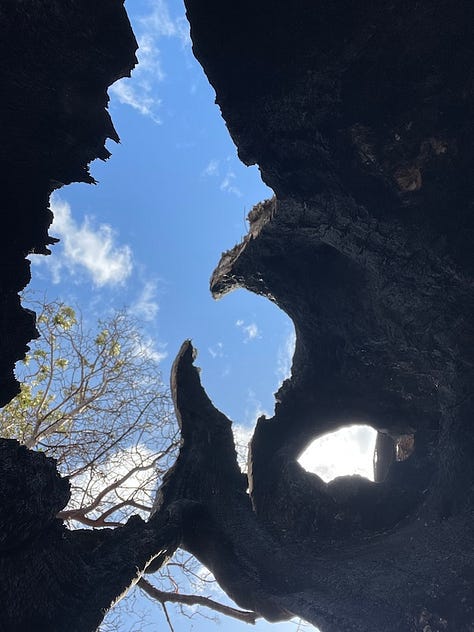
It burned uphill through oak woodlands and chaparral, gaining speed as fire does. While most of what we saw was regenerative, there were areas of hardwoods, that saw some casualities. The oakwoodland faired well but a few centuries old elders succumbed. It also burned through a stand of conifers that had been hit hard a year or two earlier by beetles. (I wrote a little about this in 2023, as our area was in a die-off cycle being called firmageddon. I am happy to report that wet winters and the cyclical nature of beetle populations have worked in our favor. There are still some pines affected by another beetle, but for the most part, this round of dying trees is over.)
Last week, Christopher and I went on a wildflower hike to this burned area to see how it looked. We live in a fire adapted ecosystem so many seeds require fire for their release or germination. Some of these seeds germinate after exposure to heat, and some just the exposure to the chemicals in the smoke triggers them, others need the layer of leaves and duff reduced in order to germinate. Fire can also make room and open areas to sunlight by the fire’s burning of live brushy vegetation. The year or two after wildfires usually the wildflowers are often quite prolific. Morel mushrooms can be too. We didn’t fine a lot on this walk but when the first person spotted one the walk went on pause as we all crawled around under burned manzanita to find these little treasures. Nobody found more than a handful.
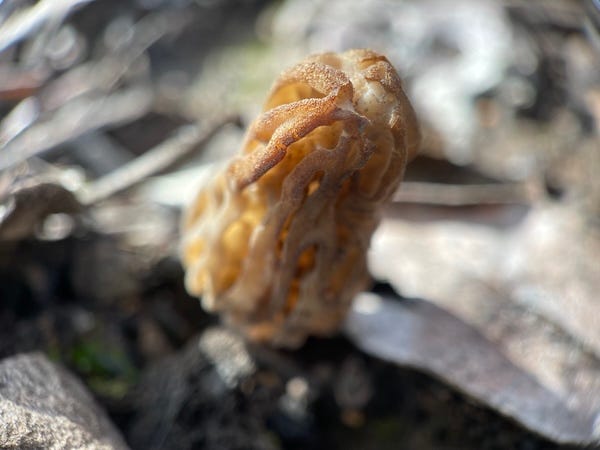
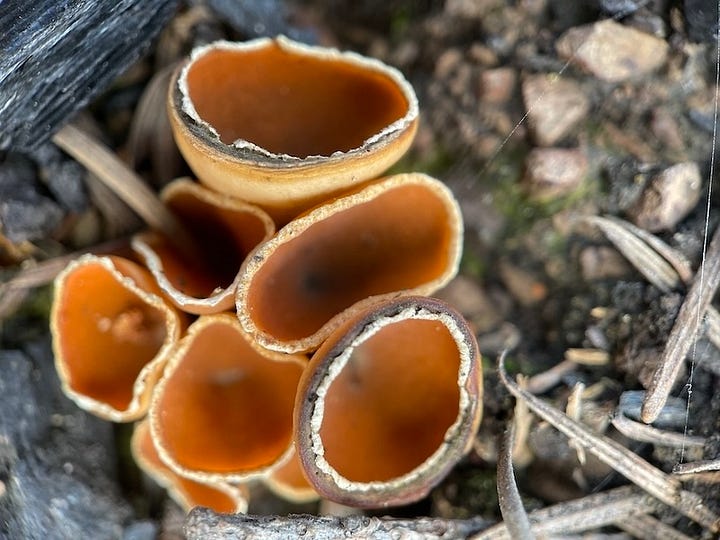
It was interesting to walk through the section of conifer forest that had been hit so severely with the beetle kill. We are led to believe these standing dead trees are just fuel and will make our wildfires worse. Instead in this case it was just the opposite. The dead trees had no oily, flammable needles. The fire burned right past them. There was no fuel to take the first to the crowns of even the living trees. In a way it was just the opposite. Instead, the ground cleaned there were new trees sprouting. By the time the dead trees slowly fall they will still not be fuel as they will be punky and will fall as mulch on the forest floor.
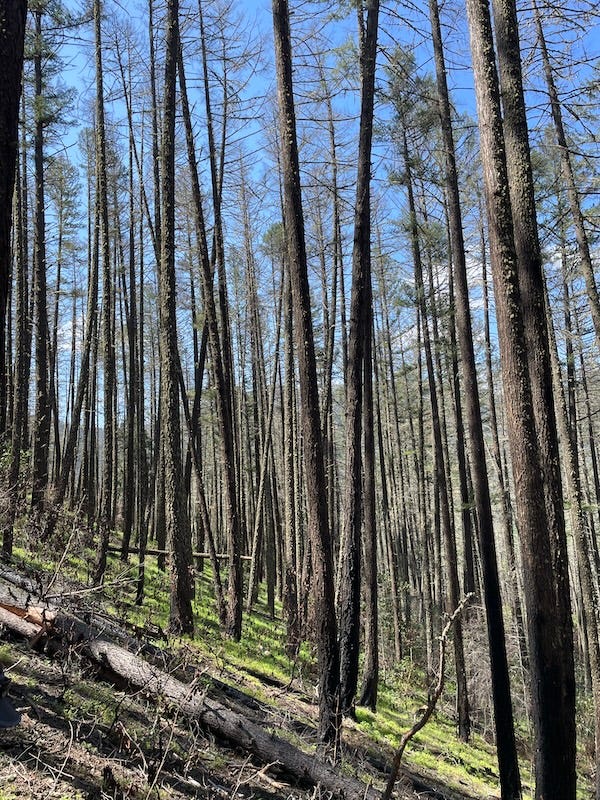
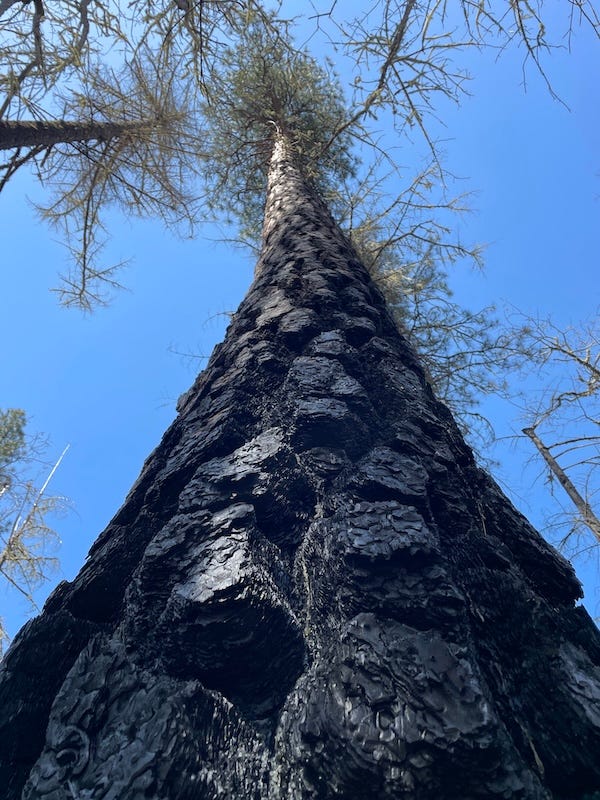
Beauty does rise from the ashes and without further ado I want to show you some of the wildflowers we saw.
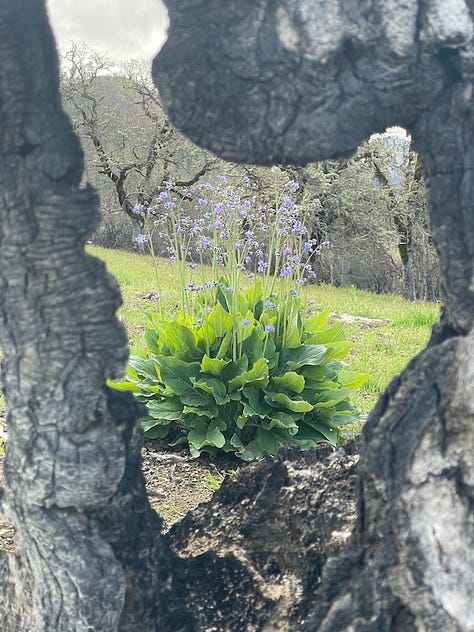
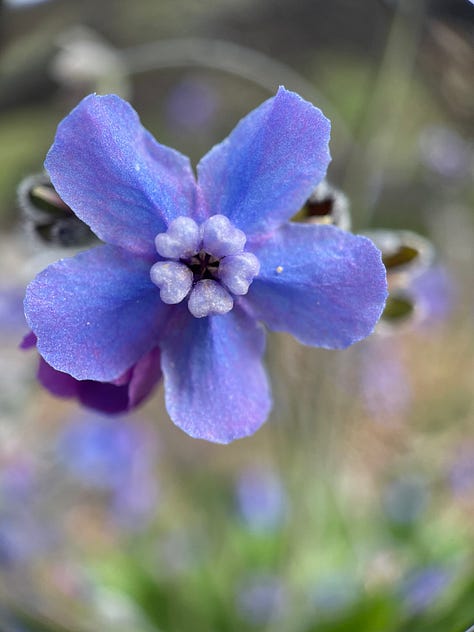
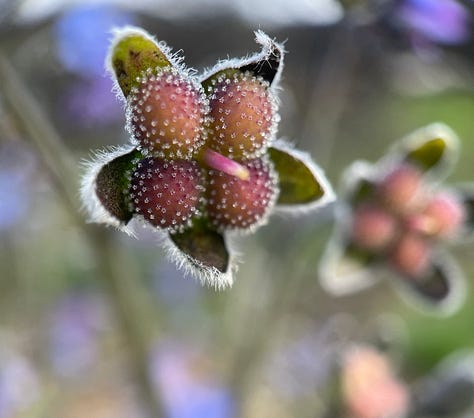
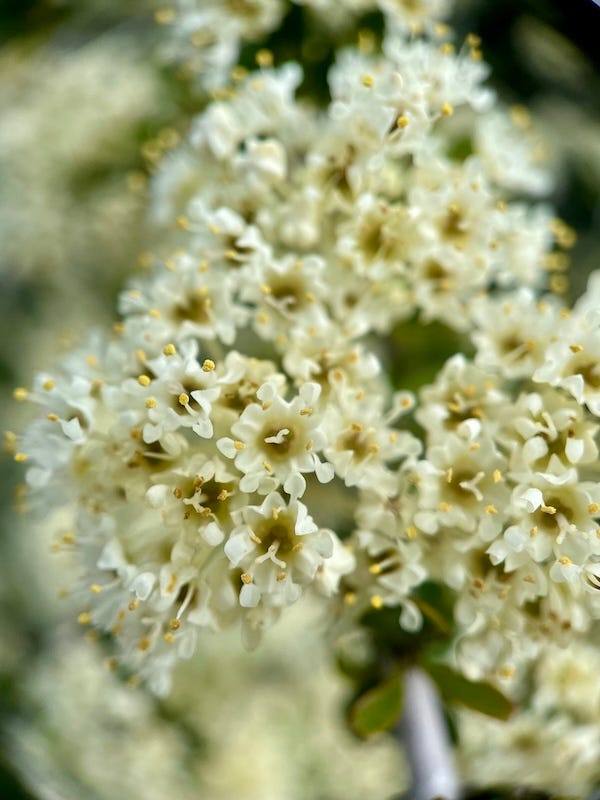
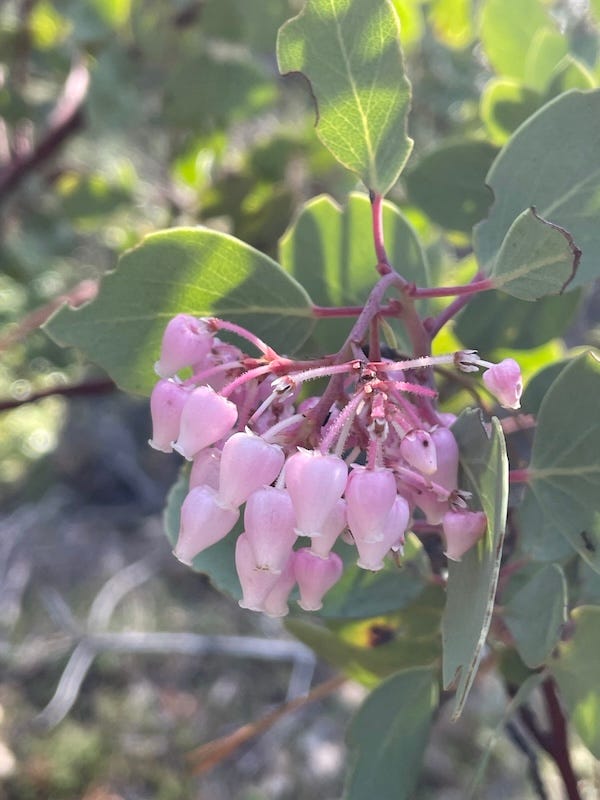
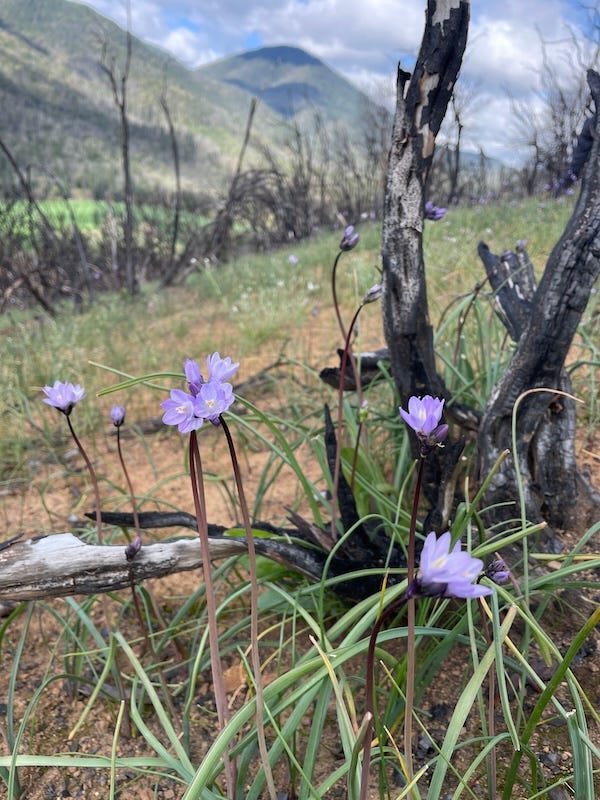
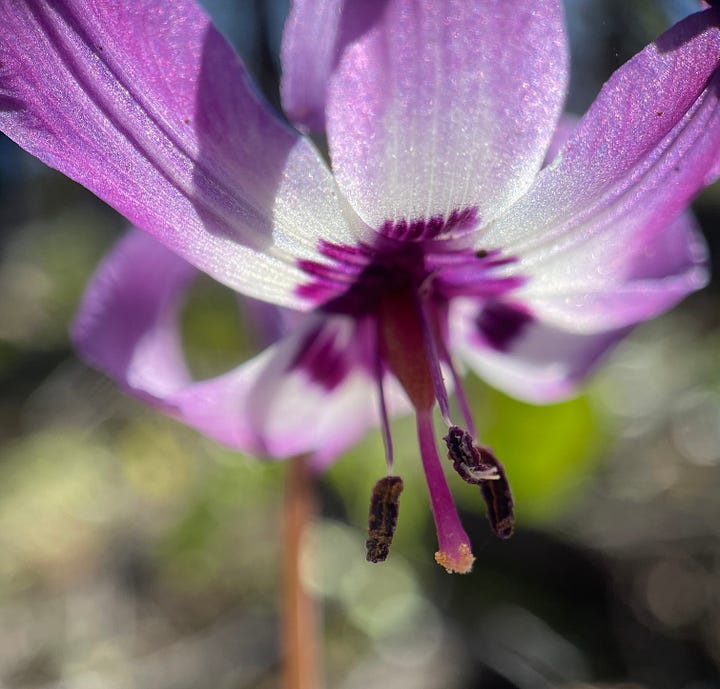
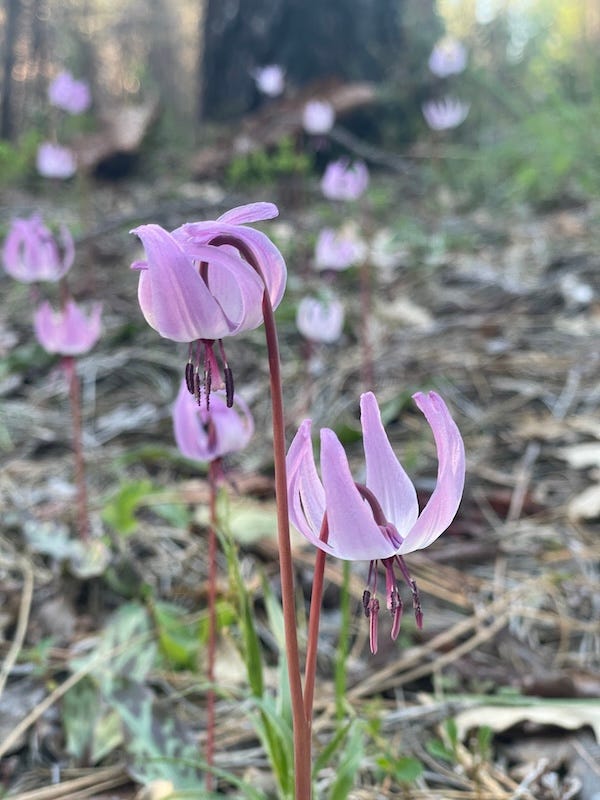

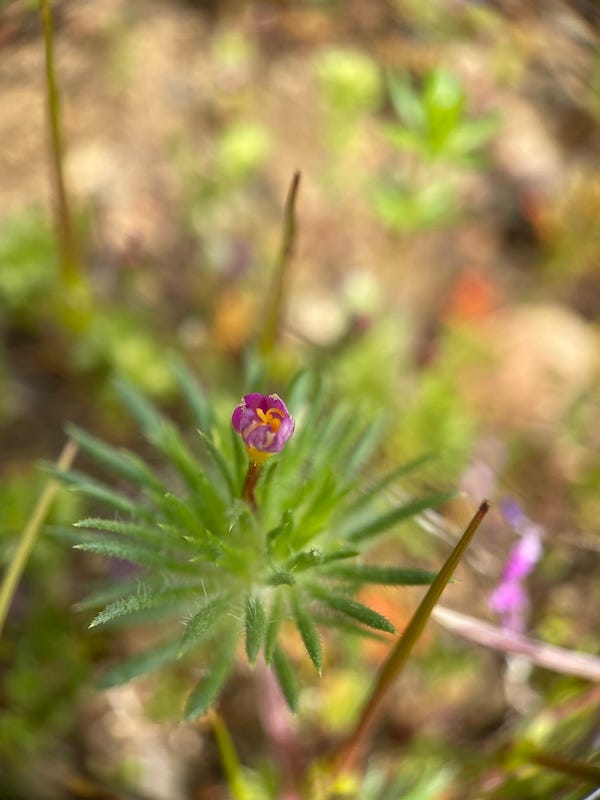
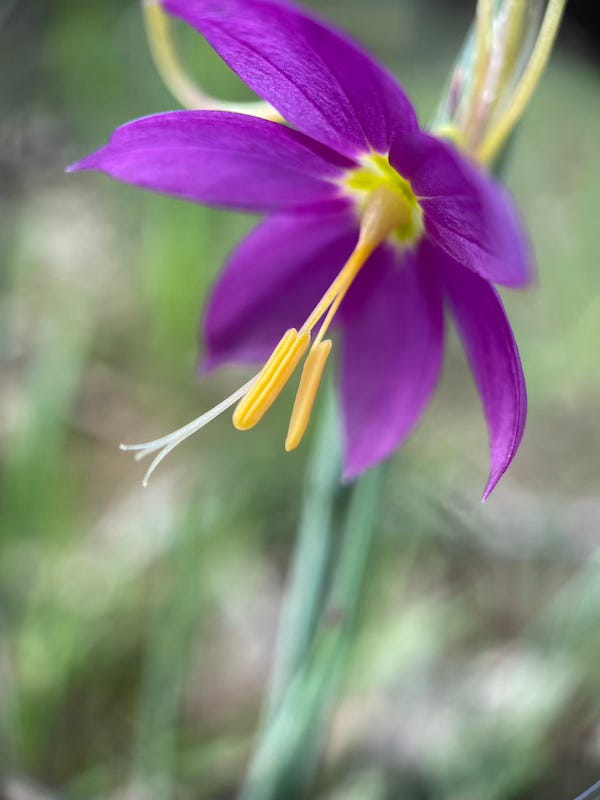
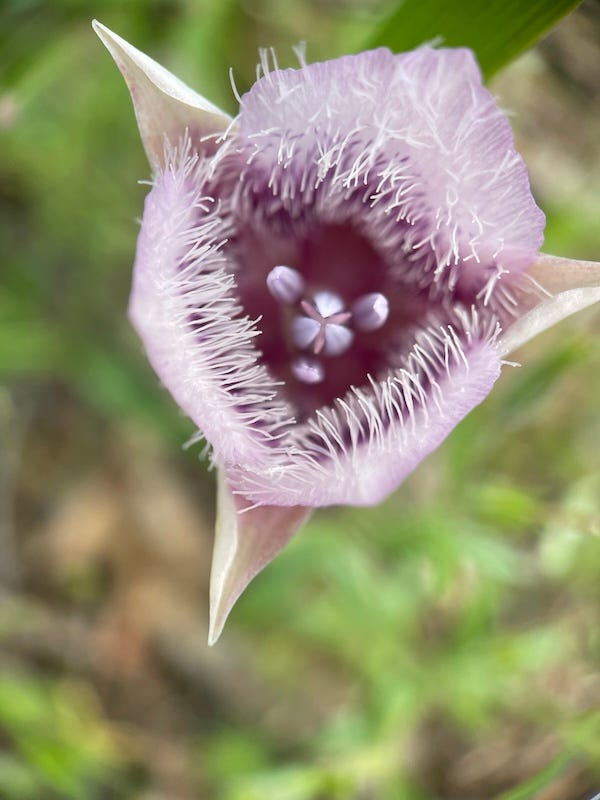
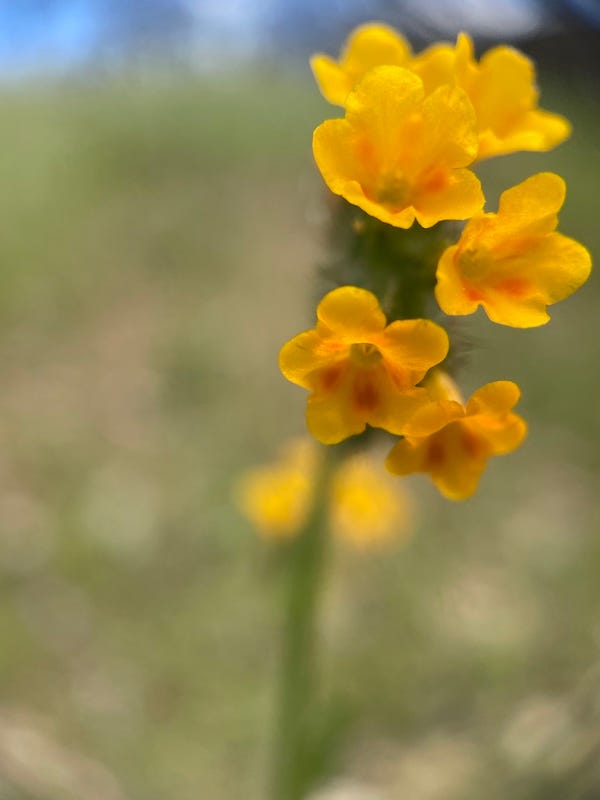
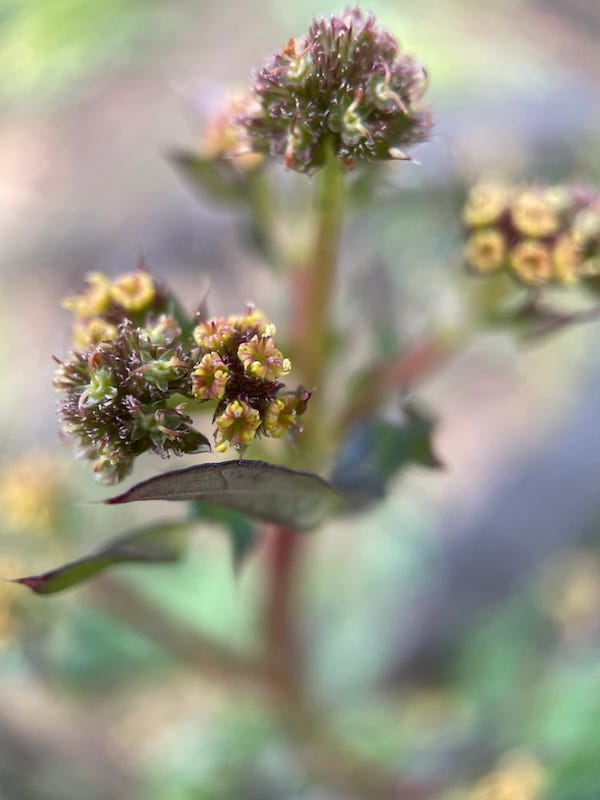
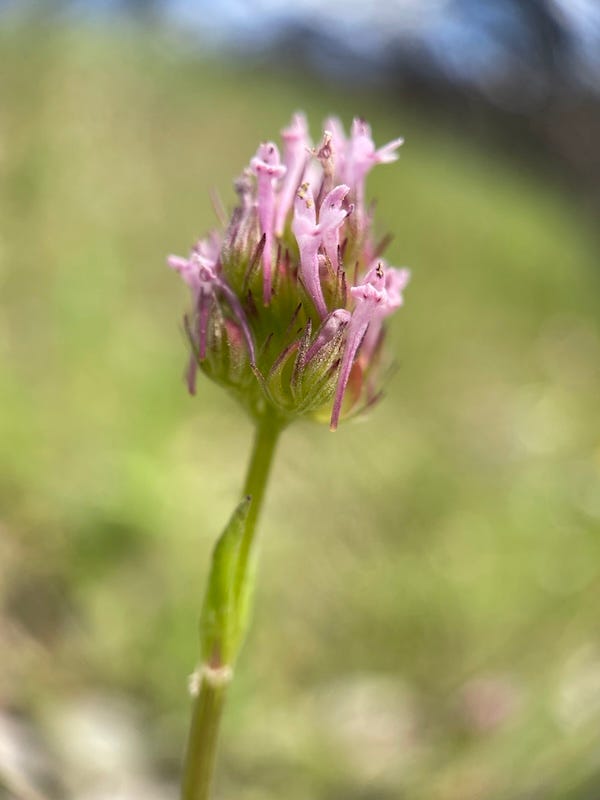
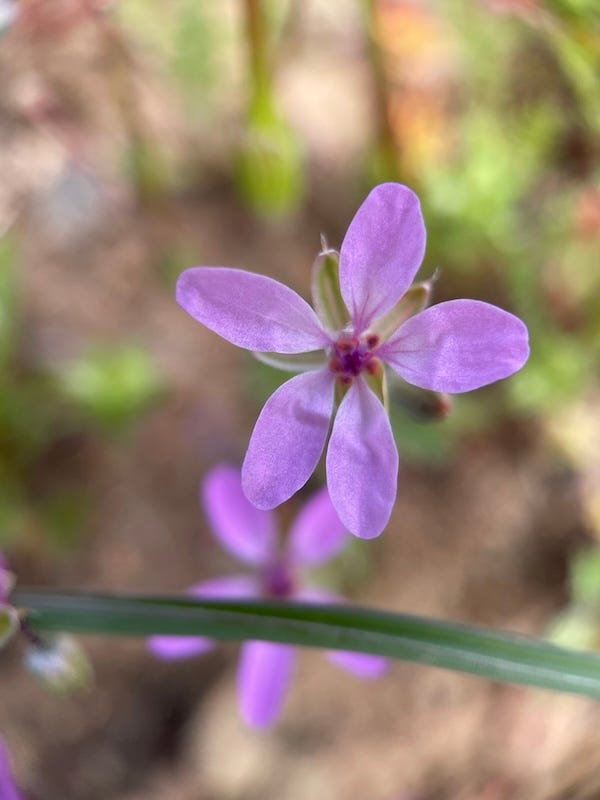
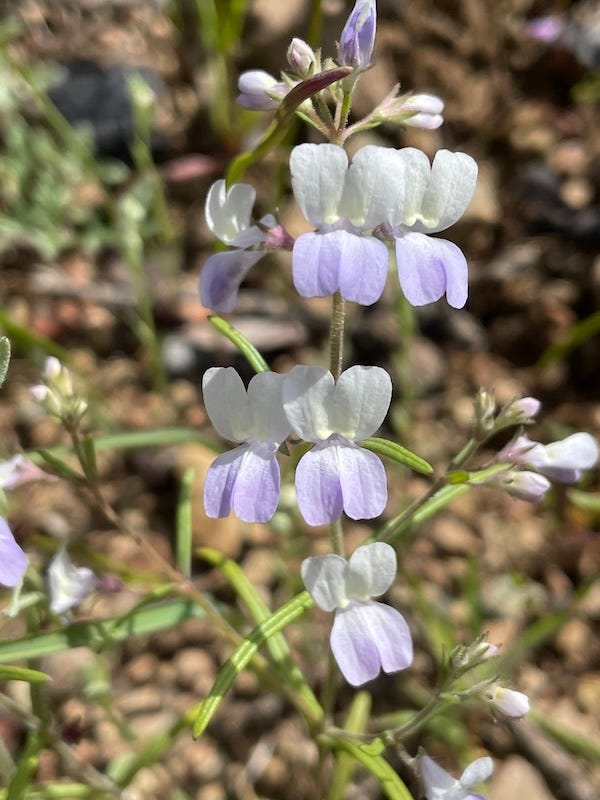
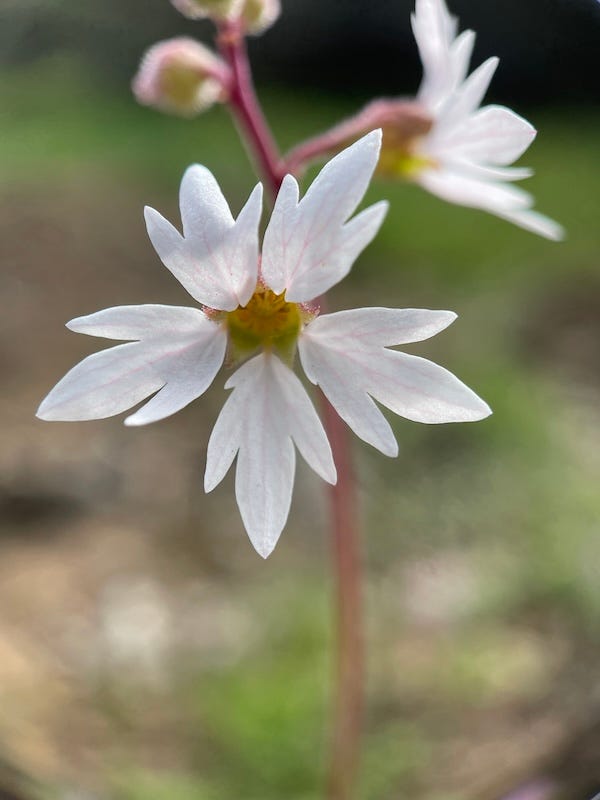
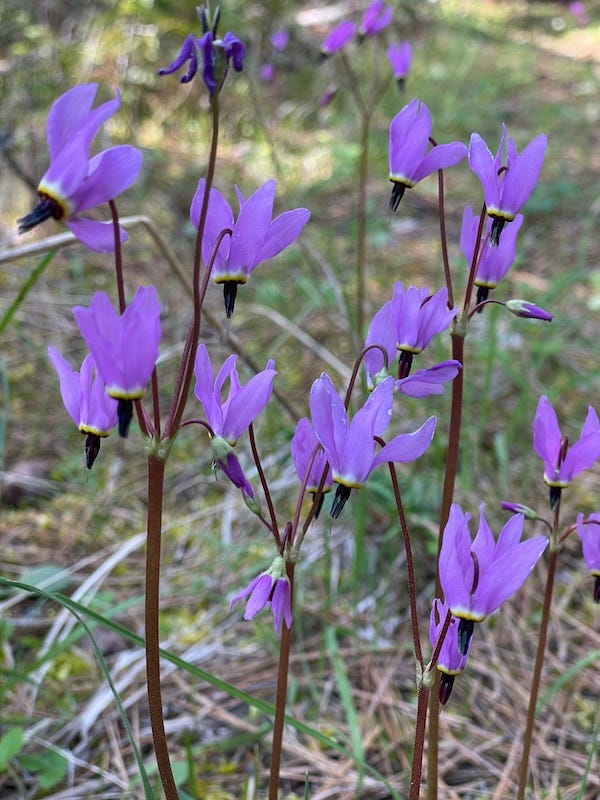
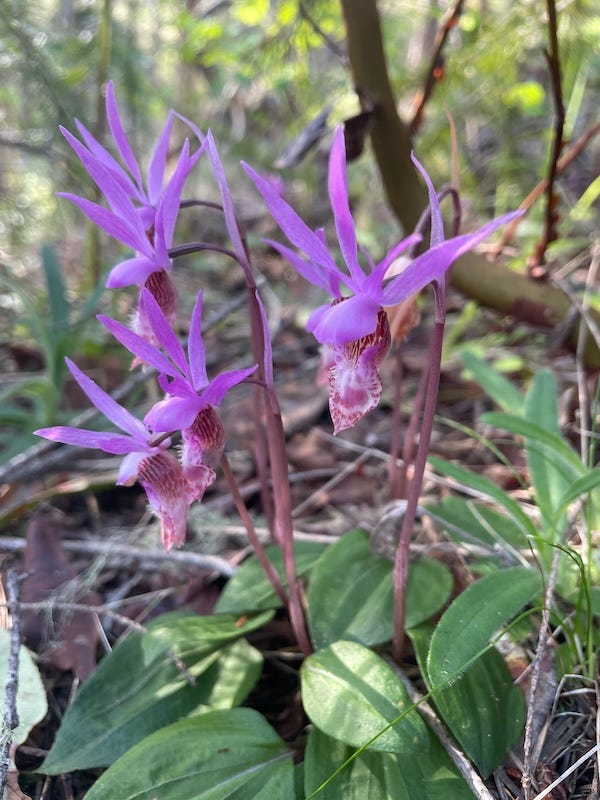





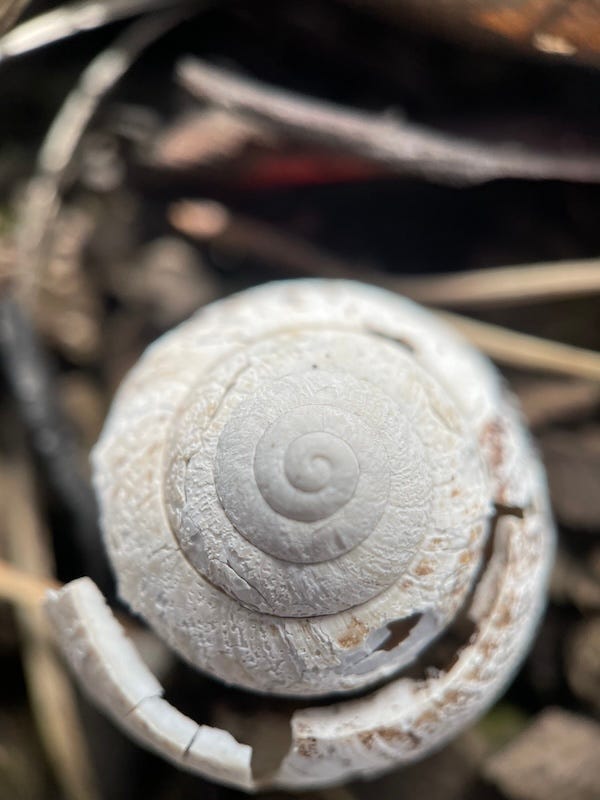
Oh, what fun you had crawling around in the dirt, taking all those glorious photos! I appreciate your sharing. It shows the resilience of the forests.
What a beautiful post! Is inspiring to see such diversity spring up so soon after a fire. Best of luck with your native garden, and maybe after you get it established this year, they will not be so much hose pulling next year :-)